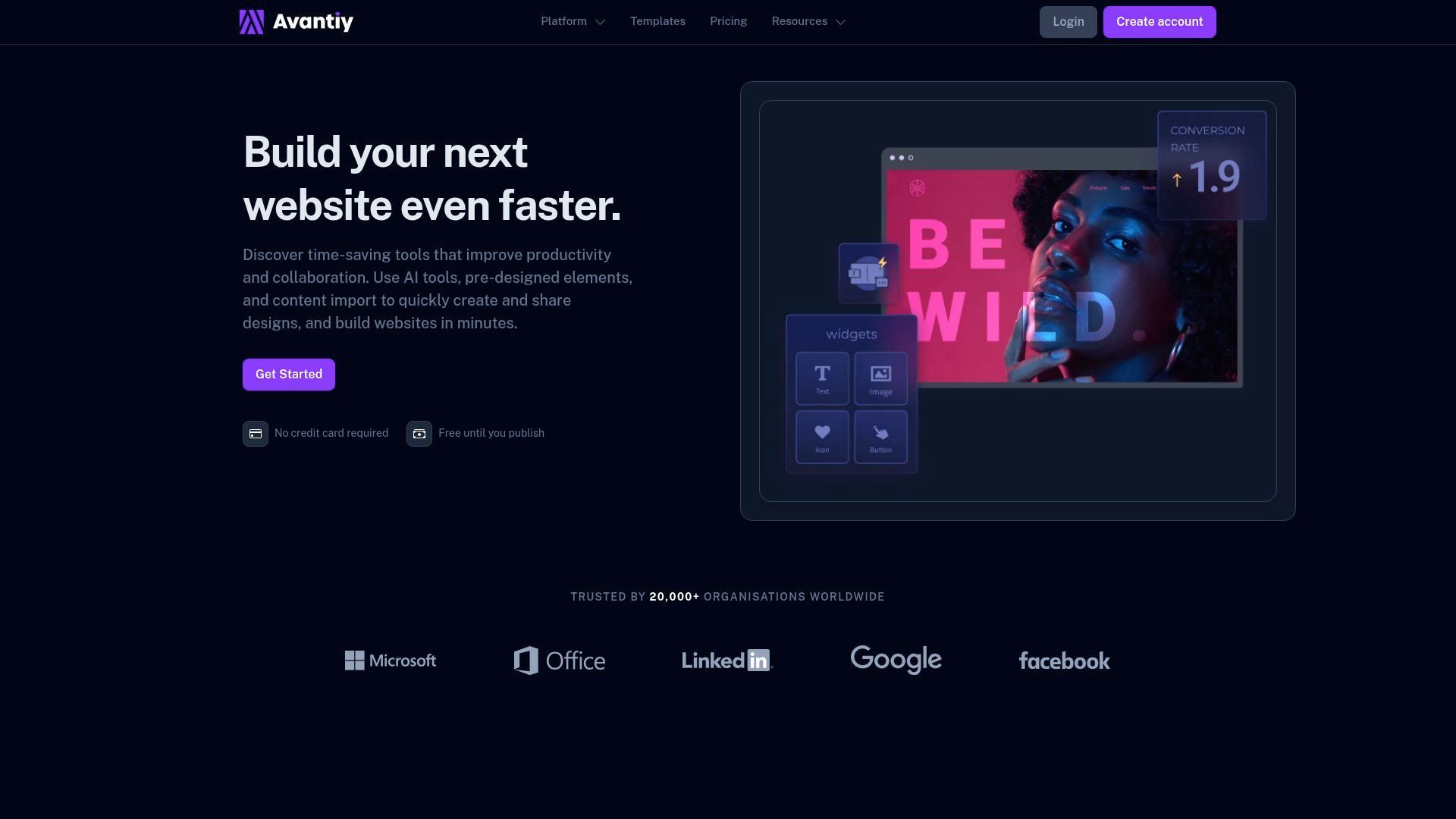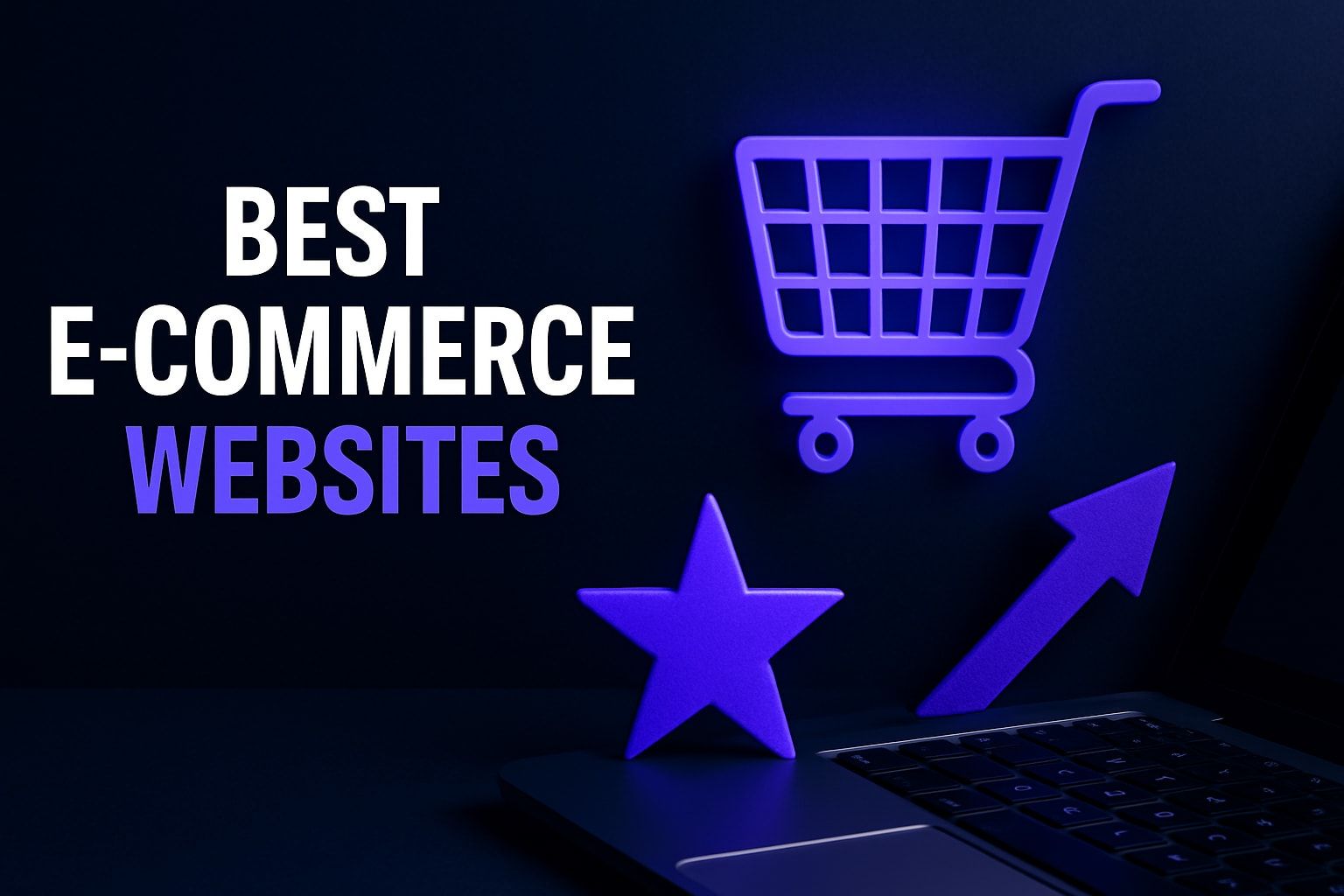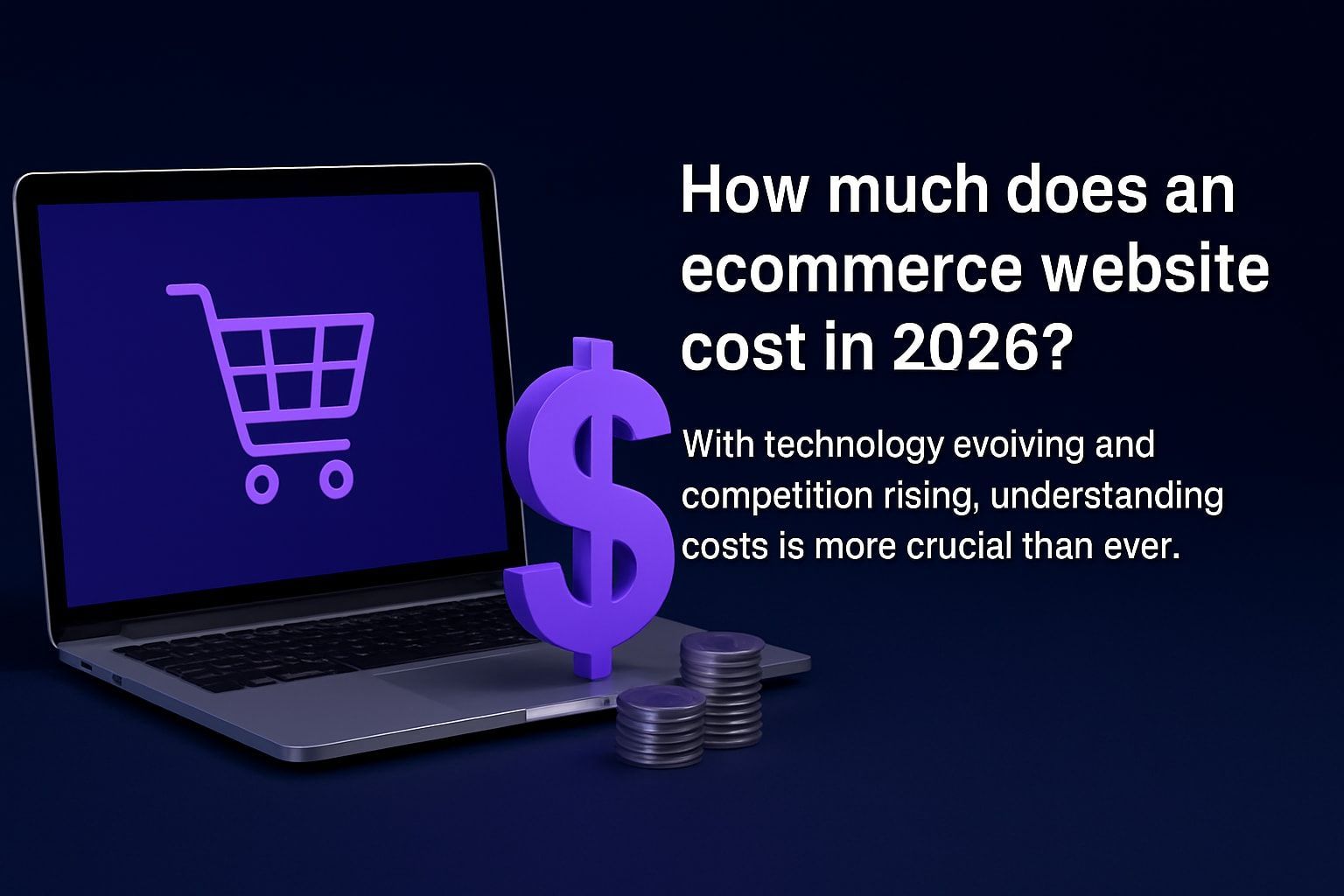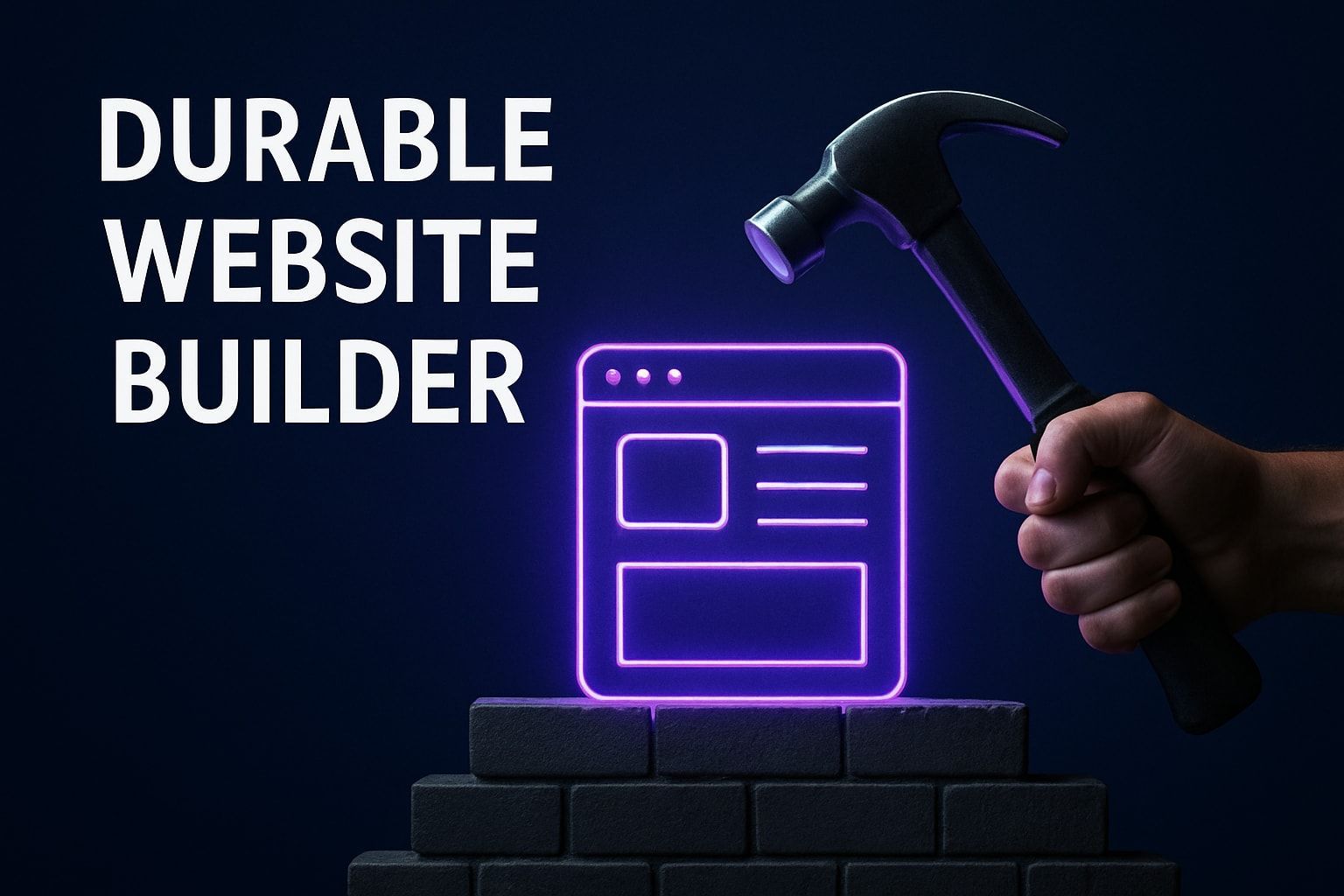The Ultimate Guide to Powerful Website Creation for Beginners (2025)
Building a powerful website in 2025 is easier and more essential than ever—even for complete beginners. Website creation tools have evolved rapidly, opening the door for anyone to build a professional online presence without coding skills.
No matter your background or budget, you can launch a stunning site that gets real results. Want to showcase your work, sell products, or grow your business? The tools and guidance are at your fingertips.
This article is your complete, step-by-step guide to building a powerful website from scratch. You’ll discover the latest strategies, best platforms, design tips, SEO essentials, and maintenance steps to create a site that truly stands out.
Step 1: Planning Your Powerful Website
Getting started with a powerful website begins with thoughtful planning. Before you dive into design or content, it’s crucial to lay a solid foundation. This step helps you define your direction, understand your audience, and map out the features that will set your site apart.

Defining Your Website Goals and Audience
Start by clarifying the purpose of your powerful website. Are you aiming to showcase a portfolio, launch an eCommerce store, or promote a local service? Define your business or personal objectives clearly. Next, identify your target audience: Who are they, what are their needs, and what problems can your site solve for them? Use market research to understand demographics and pain points. Set measurable goals, such as increasing traffic, gathering leads, or driving sales. In 2024, 61% of small businesses set website KPIs to track performance. For example, a freelance designer’s portfolio site serves a different audience than a handmade goods shop.
Researching Competitors and Inspiration
Research is a key step in planning a powerful website. Analyze the top competitors in your niche to see what works and what doesn’t. Use tools like SimilarWeb and BuiltWith to uncover their features, technologies, and design trends. Gather inspiration from award-winning sites on platforms like Awwwards and Behance. Look closely at home page layouts, navigation styles, and branding choices. Make note of which elements engage you as a visitor and why. This process helps you spot opportunities to differentiate your site, ensuring your online presence is both unique and competitive from the start.
Deciding on Key Features and Functionality
A powerful website needs the right features to support your goals and audience. List essential elements like contact forms, eCommerce functionality, blogs, booking systems, or image galleries. Prioritize these based on what your users need most and what helps you achieve your business objectives. For example, a local salon may require an easy-to-use booking system, while a crafts business benefits from robust eCommerce capabilities. Make a clear distinction between must-have features and nice-to-haves to stay focused. This ensures your website remains user-friendly and effective, setting the stage for long-term success.
Mapping Out Your Website Structure
The final step in planning your powerful website is mapping out its structure. Start by outlining key pages: home, about, services, blog, and contact. Create a sitemap to visualize how visitors will navigate your site. A clear structure supports both usability and search engine optimization. Reference Google’s 2024 UX guidelines for logical navigation that guides users smoothly between sections. For more ideas on organizing your site effectively, check out Website Design Best Practices for 2025. Whether it's a simple five-page site or a complex eCommerce platform, a well-planned structure is vital.
Step 2: Choosing the Right Website Builder or Platform
Choosing the right platform is the cornerstone of building a powerful website. With so many options in 2025, it's easier than ever to find a solution tailored to your needs, whether you’re launching a portfolio, online store, or blog.
Comparing Popular Platforms (WordPress, Wix, Shopify, Squarespace, etc.)
The most popular platforms for creating a powerful website today are WordPress, Wix, Shopify, and Squarespace. Each stands out with unique strengths and ideal use cases. According to 2024 data, WordPress leads the market with 43% share, followed by Wix at 8% and Shopify at 6%.
Here's a quick comparison:
| Platform | Best For | 2024 Market Share | Strengths |
|---|---|---|---|
| WordPress | Blogs, all types | 43% | Flexibility, plugins |
| Wix | Beginners, SMBs | 8% | Drag-and-drop, templates |
| Shopify | eCommerce | 6% | Sales features, scalability |
| Squarespace | Portfolios, SMBs | 4% (est.) | Design, ease of use |
- WordPress: Ideal for those seeking full control and scalability.
- Wix: Great for users who want to launch quickly with minimal learning curve.
- Shopify: Built for anyone focused on selling products online.
- Squarespace: Popular with creatives and small businesses valuing design.
When comparing, refer to Top 50 Web Design Best Practices 2024 for guidance on choosing platforms that prioritize responsive design and user experience, both crucial for a powerful website.
Key Considerations: Ease of Use, Cost, Scalability, Support
When selecting a platform for your powerful website, assess these factors:
- Ease of use: Does it offer drag-and-drop editing for beginners?
- Cost: What are the monthly or annual fees? Are there hidden costs for plugins or upgrades?
- Scalability: Can your site grow with your needs, such as adding eCommerce or a blog later?
- Support: Is customer service responsive? Are tutorials and community forums available?
For example, Wix and Squarespace are beginner-friendly with intuitive editors, while WordPress offers more freedom but requires basic technical skills. Shopify’s pricing is higher but includes robust sales tools. Always consider your budget and how much time you want to spend learning the platform, as this directly impacts your ability to maintain a powerful website.
Essential Features for Beginners
Look for platforms that offer essential features by default, helping you create a powerful website without technical headaches:
- Built-in SEO tools: Make it easy to optimize your site for search engines.
- Mobile optimization: Templates should be responsive out of the box.
- Template variety: Choose from modern, professionally designed layouts.
- Security: SSL certificates, regular updates, and reliable hosting.
For instance, one-click publishing and responsive templates are invaluable for beginners. Prioritizing these features ensures your powerful website is fast, safe, and ready for visitors.
Platform-Specific Pros and Cons
Every platform has its unique advantages and trade-offs:
- WordPress: Highly flexible and customizable, but requires regular maintenance.
- Wix: Extremely easy to use, though advanced customization is limited.
- Shopify: Exceptional for eCommerce, but less flexible for non-store sites.
- Squarespace: Beautiful designs, but fewer integrations than WordPress.
Understanding these pros and cons helps you align your choice with your powerful website goals and prevents frustration down the line.
Avantiy: AI-Powered Website Builder for Beginners
Avantiy is a cutting-edge, AI-powered platform designed for anyone wanting to launch a powerful website fast. Its drag-and-drop editor, customizable templates, and built-in SEO tools make it perfect for non-coders.

With Avantiy, you can build eCommerce stores, portfolios, blogs, and more—all mobile-friendly by default. Real users praise its intuitive interface and quick setup. If you want to skip the tech headaches and focus on results, Avantiy empowers you to create a powerful website without compromise.
Step 3: Designing a Visually Stunning and User-Friendly Website
Design is the heart of any powerful website. It’s the first thing visitors see and the foundation for user experience, trust, and engagement. Whether you’re building your first site or refining your skills, great design ensures your powerful website stands out and keeps users coming back.

Selecting the Right Template and Customizing Your Design
Choosing the perfect template is the first step toward a powerful website. A modern, responsive template ensures your site looks great on every device and loads quickly. Start by browsing templates that fit your industry and goals.
For example, a fitness instructor might choose a template with bold visuals and class schedules, while a tech startup may prefer minimalist layouts and interactive elements. Once you pick a template, personalize it with your brand colors, unique fonts, and logo. This customization transforms a basic template into the foundation of your powerful website.
Use the template’s settings to adjust layouts, add sections, and experiment with color schemes. Don’t be afraid to preview multiple options before making a final choice. Remember, the right template is flexible and easy to update as your powerful website evolves.
Creating a Consistent Brand Identity
A powerful website always reflects a cohesive brand identity. Consistency in visuals, colors, and messaging helps visitors remember you and builds credibility.
Align every design element—logo, color palette, and font choices—with your overall brand style. Create or refer to a brand style guide to maintain uniformity across your website and social channels. For instance, a creative agency might use vibrant colors and playful fonts, while a law firm would opt for muted tones and classic typography.
Consistency doesn’t end with visuals. Ensure your tone of voice and messaging match your brand’s personality throughout your powerful website. This unified approach strengthens recognition and trust.
Crafting Intuitive Navigation and Layout
Navigation can make or break a powerful website. Simple, intuitive menus help visitors find what they need fast, reducing frustration and increasing conversions.
Follow best practices for menu placement—keep navigation at the top or side, use clear labels, and limit main menu items to 5–7 options. Group similar pages under dropdowns for a tidy structure. Effective navigation layouts are proven to boost user engagement. According to Web Design Best Practices to Improve UX in 2024, intuitive design and clear site structure play a key role in user satisfaction.
Use a visual hierarchy: highlight important pages and ensure every link is easy to tap, especially on mobile. A streamlined layout makes your powerful website more welcoming and efficient for all users.
Ensuring Mobile Responsiveness and Accessibility
Over half of web traffic now comes from mobile devices. A powerful website is always mobile-friendly, adapting seamlessly to any screen size.
Choose templates labeled as “responsive,” and test your site on different devices before launch. Mobile-first design means prioritizing fast load times, readable fonts, and easily tappable buttons. Accessibility matters, too—use high-contrast colors, alt text for images, and clear headings so everyone can enjoy your powerful website.
These basics not only expand your audience but also boost search rankings and user satisfaction.
Using High-Quality Images and Visual Elements
Visuals are essential for a powerful website. Original, high-resolution images grab attention and convey professionalism. Use graphics that support your message, like infographics or testimonials.
Optimize every image before uploading. Tools such as TinyPNG and Squoosh reduce file size without sacrificing quality, helping your powerful website load faster. For example, compressing images can dramatically improve site speed, which keeps visitors engaged.
Mix photos, icons, and videos for a dynamic look. Always use images that reflect your brand and enhance the user experience—not just fill space.
Enhancing Site Speed and Performance
A powerful website must load quickly. Slow sites drive visitors away, while fast-loading pages keep them engaged.
Google recommends a load time under 2.5 seconds. Achieve this by compressing images, limiting plugins, and enabling caching. Regularly test your site’s speed and tweak elements as needed.
Remember, performance is an ongoing process. Monitor your powerful website and make improvements to ensure every visitor enjoys a smooth experience.
Step 4: Creating Compelling Content that Converts
Creating content that truly converts is the heart of any powerful website. Even the best design falls flat if your words and visuals don’t connect with your audience. Let’s break down how to plan, write, and optimize content that drives real results.

Planning Your Website Content Strategy
A powerful website begins with a clear content strategy. Start by mapping out your core pages: home, about, services, FAQs, and blog. Identify what each page should achieve—do you want to educate, build trust, or drive conversions?
Think about your audience’s biggest questions and needs. For example, a consultant’s services page might highlight expertise, case studies, and strong calls-to-action. By outlining your content in advance, you set a strong foundation for your powerful website to engage and convert visitors.
Writing Engaging Copy for Each Page
Every word on your powerful website should serve a purpose. Begin with attention-grabbing headlines, clear value propositions, and direct calls-to-action that guide users to take the next step. Use storytelling to humanize your brand and make complex topics simple.
Keep your language user-focused—speak to your audience’s needs, not just your own features. For proven tips on web copy, branding, and CTAs, check out these 12 Web Design Best Practices for 2024. Well-crafted copy transforms casual visitors into loyal customers on your powerful website.
Incorporating SEO Best Practices
No powerful website is complete without SEO. Start with keyword research to understand what your audience is searching for. Use your primary keywords in headers, meta descriptions, and throughout the body text, but keep it natural.
Optimize each page’s meta tags and use descriptive, keyword-rich headings. Add internal links between related pages to boost SEO. According to 2024 data, pages with optimized meta descriptions and headers are more likely to rank high and attract organic traffic to your powerful website.
Using Visual and Interactive Content
Visuals make your powerful website memorable and engaging. Embed high-quality images, videos, and infographics to break up text and illustrate your message. Interactive elements—like quizzes, testimonials, or sliders—keep visitors active and interested.
For example, adding a short video introduction to your homepage can boost engagement by 34%. Choose visuals that align with your brand and compress images for fast load times. Every visual should support your content goals and enhance the user’s journey on your powerful website.
Legal Pages and Compliance
A powerful website isn’t just about looks and words—it must also be trustworthy and compliant. Include essential legal pages: privacy policy, terms of service, and cookie consent banners. These not only protect you but also build trust with visitors.
Stay updated with regulations like GDPR and CCPA, especially if you serve a global audience. Make these pages easy to find in your footer. Ensuring compliance helps your powerful website remain credible, secure, and accessible to everyone.
Step 5: Optimizing for SEO and User Experience
Ready to take your powerful website to the next level? This step focuses on making your site not only visible in search engines but also delightful for visitors. Let’s break down how to optimize both SEO and user experience so your powerful website stands out and performs at its best.
Conducting Keyword Research and Site Structure Optimization
Every powerful website starts with solid keyword research. Use tools like Google Keyword Planner or SEMrush to discover what your audience is searching for. Focus on keywords that match your goals and are realistic for your niche.
Once you have your keywords, plan your site’s structure. Organize your pages into logical silos—grouping related topics under main categories. This not only helps visitors navigate but also boosts how search engines understand your powerful website.
- Use main keywords for primary pages.
- Group subtopics under clear categories.
- Create a sitemap for easy navigation.
A well-structured site makes it easier for users and search engines to find your most important content.
On-Page SEO Essentials
To make your powerful website rank higher, you need to optimize every page. Start with strong, relevant page titles and meta descriptions that include your target keywords. Use headers (H1, H2, H3) to organize content and help search engines understand your topics.
Don’t forget internal linking. Connect related pages to guide visitors and distribute authority across your powerful website. According to 2024 data, sites with strong internal linking see a 40% boost in search rankings.
- Use descriptive image alt text.
- Add clear CTAs on each page.
- Optimize for both users and search engines.
These essentials set the foundation for ongoing SEO success.
Technical SEO Basics for Beginners
Technical SEO ensures your powerful website is crawlable and secure. First, set up an XML sitemap and submit it to Google Search Console. This helps search engines index your site accurately.
Make sure your site uses SSL (https) for security. Check that your site is mobile-friendly, as Google prioritizes mobile-optimized sites. Use a
robots.txt
file to control what search engines can see.
- Regularly update plugins and themes.
- Monitor for broken links.
- Use simple, clean URLs.
These basics keep your site safe and search-friendly, giving your powerful website a strong technical foundation.
Improving User Experience (UX) Signals
User experience is a major ranking factor for any powerful website. Google’s Core Web Vitals measure things like loading speed, interactivity, and layout stability. Aim for fast load times and a smooth browsing experience.
Reduce clutter and make navigation intuitive. Use clear menus and logical page hierarchies. Keep paragraphs short and use headings to break up text.
- Minimize pop-ups and distractions.
- Use readable fonts and good color contrast.
- Add helpful visuals to enhance content.
Better UX keeps visitors engaged and encourages them to explore more of your powerful website.
Leveraging Analytics and Tracking Tools
To grow your powerful website, you need to track what’s working. Set up Google Analytics and Search Console to monitor your traffic, user behavior, and conversions. Look at which pages attract the most visitors and where users drop off.
Use data to refine your content, test new features, and improve your site’s performance. Try A/B testing landing pages to see what resonates best with your audience.
- Track key metrics like bounce rate and average session duration.
- Set up goals for conversions.
- Review analytics regularly for actionable insights.
Continuous monitoring ensures your powerful website evolves and meets your audience’s needs.
Step 6: Launching and Maintaining Your Website for Ongoing Success
Launching your powerful website is a huge milestone, but ongoing success depends on careful preparation and steady maintenance. Even after the initial launch, every detail matters. In this section, you’ll discover the critical steps to ensure your powerful website is ready for visitors, stays secure, and continues to grow.
Pre-Launch Checklist and Testing
Before your powerful website goes live, double-check everything with a comprehensive pre-launch checklist. This ensures your site is error-free and delivers a seamless experience from day one.
| Checklist Item | Description |
|---|---|
| Cross-browser testing | Ensure your site looks great on Chrome, Firefox, Safari, and Edge. |
| Device compatibility | Test on desktop, tablet, and mobile devices. |
| Broken link check | Scan for and fix any dead or incorrect links. |
| Form validation | Confirm all contact and signup forms work perfectly. |
| Spelling and grammar | Spelling and grammar Proofread for professionalism and clarity. |
A meticulous approach now helps your powerful website make a strong first impression.
Submitting Your Site to Search Engines
After launch, submit your powerful website to major search engines like Google and Bing. This step ensures your site gets indexed and can start attracting organic traffic.
- Verify site ownership using Google Search Console.
- Submit your XML sitemap for faster indexing.
- Check for indexing errors or issues.
Taking these steps helps your powerful website become discoverable, driving visitors to your content from day one.
Promoting Your Website Post-Launch
Your powerful website deserves attention beyond its initial launch. Use a mix of online channels to spread the word and attract your ideal audience.
- Share your launch on social media platforms.
- Announce your site to your email subscribers.
- List your business in local directories for more visibility.
Consistent promotion keeps your powerful website in front of new eyes and encourages engagement from your community.
Regular Updates, Security, and Backups
To keep your powerful website safe and effective, regular updates and security checks are essential. Outdated plugins or software are a leading cause of website hacks.
- Update themes, plugins, and core software routinely.
- Schedule automatic backups to prevent data loss.
- Use strong passwords and enable two-factor authentication.
A secure, updated powerful website builds trust and protects your hard work.
Monitoring Performance and Iterating for Growth
After launch, use analytics tools like Google Analytics and Search Console to monitor how your powerful website performs. Track traffic, user behavior, and conversions to spot growth opportunities.
- Review top-performing pages and optimize them further.
- Run A/B tests on landing pages to boost conversions.
- Adjust your strategy based on real data.
This continuous improvement keeps your powerful website one step ahead in a competitive digital world.
Now that you know how simple it can be to plan, design, and launch a powerful website—even if you’re just starting out—you’re ready to put these steps into action. Imagine turning your idea into a stunning, mobile-friendly site in just a few hours, with no coding or tech headaches. With Avantiy’s AI-powered tools and intuitive templates, you have everything you need to create a site that truly stands out and grows with you. Why wait? Let’s take that first step together—Start Building Your Website Today.
Start building your new website today
No credit of debit card required start building today




